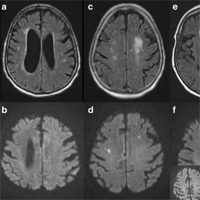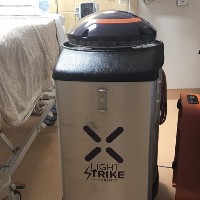Stories Category: Intensive Care

Translational Evidence for Two Distinct Patterns of Neuroaxonal Injury in Sepsis
Ischemic and diffuse neuroaxonal injury to the brain in experimental sepsis, human postmortem brains, and in vivo MRI suggest these two distinct lesion types to be relevant. Future studies should be focused on body fluid... read more

Delirium in Hospitalized Older Adults
Delirium, an acute confusional state, is common among hospitalized elders and is associated with poor outcomes. All patients with delirium should be evaluated for reversible causes. Behavioral disturbances should be managed... read more

Barriers to Delirium Assessment in the ICU
Many barriers exist to prevent effective assessment and management of delirium, but several of these are due to a lack of understanding or unfamiliarity with the condition and the assessment tools as well as lack of medical... read more

Aerosol Delivery During Invasive Mechanical Ventilation
Lung deposition was lower than 20% of nominal dose delivered with nebulizers and mostly occurred in proximal airways. Further studies are needed to link substantial concentrations of antibiotics in infected pulmonary fluids... read more

Can this patient be safely weaned from RRT?
The timing of initiation of renal replacement therapy (RRT) in the critically ill with acute kidney injury (AKI) has been widely studied and discussed in detail recently. However, there is limited information and few recommendations... read more

Active Noise Control Headphones to Reduce Patient’s Exposure to ICU Noise
The use of active noise cancellation, as delivered by noise-cancelling headphones, is associated with a significant reduction in noise exposure in our model of noise exposure in a cardiac ICU. This is the first study to look... read more

ICU Telemedicine Program Financial Outcomes
The ability of properly modified ICU telemedicine programs to increase case volume and access to high-quality critical care with improved annual direct contribution margins suggests that there is a financial argument to encourage... read more

Robot aims to zap out ICU infections
Hospital workers are constantly cleaning rooms to avoid Hospital Acquired Infections at Hunterdon Medical Center, but now a robot will be working to do the dirty work. In July, the hospital purchased a $100,000 Xenex... read more

Opioid use to worse outcomes in C. difficile
A study presented at the World Congress of Gastroenterology found that patients being prescribed opioids who also have Clostridium difficile infections (CDIs) have higher peak white blood cell counts, higher creatinine elevations,... read more

Levosimendan in high-risk patients undergoing cardiac surgery
Levosimendan reduces mortality in patients with preoperative severely reduced LVEF but does not affect overall mortality. Levosimendan reduces the need for RRT after high-risk cardiac surgery. Six RCTs were included in the... read more

Early Oseltamivir Therapy Improves the Outcome in Critically Ill with Influenza
This real-life study emphasizes oseltamivir efficacy on in-hospital outcome when administrated within 2 days of the onset of symptoms. Even if physicians' awareness of the influenza disease has been undeniably enhanced... read more

Humanizing the Treatment of Hyperactive Delirium in the Last Days of Life
When patients with advanced cancer near the end of their life, it is important for physicians, nurses, and other health care personnel to respect and dignify the dying process of the patient. This requires a shift in focus... read more

Sound and Light Levels Are Similarly Disruptive in ICU and non-ICU Wards
Quieter, non-ICU wards have as many SLCs as ICUs do, which has implications for quality improvement measurements. Efforts to further reduce average noise levels might be counterproductive. Light levels in the hospital (ICU... read more

2B4-Mediated Coinhibition of CD4+ T Cells Underlies Mortality in Experimental Sepsis
Sepsis is a leading cause of death in the United States, but the mechanisms underlying sepsis-induced immune dysregulation remain poorly understood. 2B4 (CD244, SLAM4) is a cosignaling molecule expressed predominantly on... read more

Preventing the misuse of ICU visiting hours to reduce inequities
Family participation in healthcare serves to improve outcomes across a broad spectrum of conditions. Current guidelines recommend open family presence in the intensive care unit (ICU) while citing evidence of its safety.... read more

Rapid Retriage of Critically Injured Trauma Patients
Critically injured patients presenting to nontrauma hospitals require timely transfer to trauma centers; however, the transfer process varies and differences in outcomes for patients from trauma centers are unknown. We evaluated... read more

Acute Kidney Injury Is Risk Factor for Delirium and Coma
For critically ill adults, acute kidney injury is a risk factor for delirium and coma. Stage 2 acute kidney injury was associated with increased risk of delirium and coma (odds ratios, 1.55 and 2.04, respectively), as was... read more








